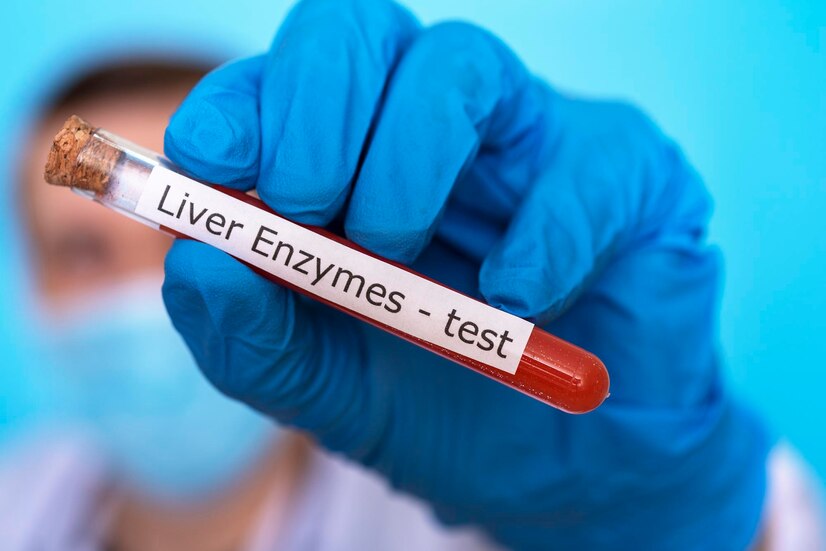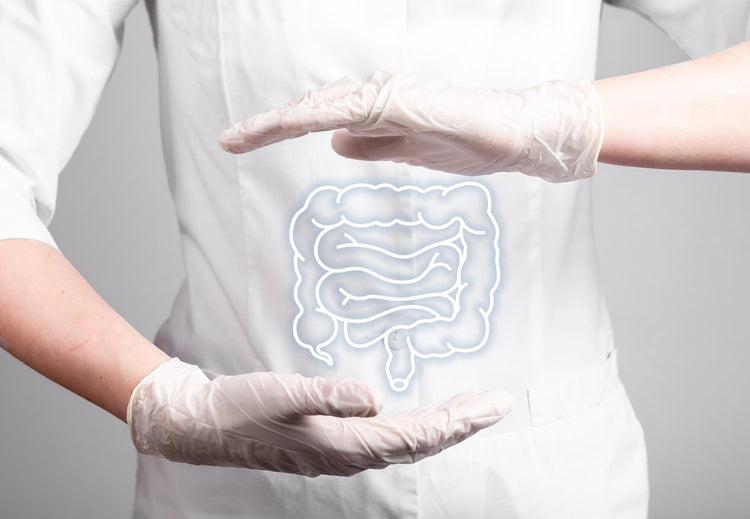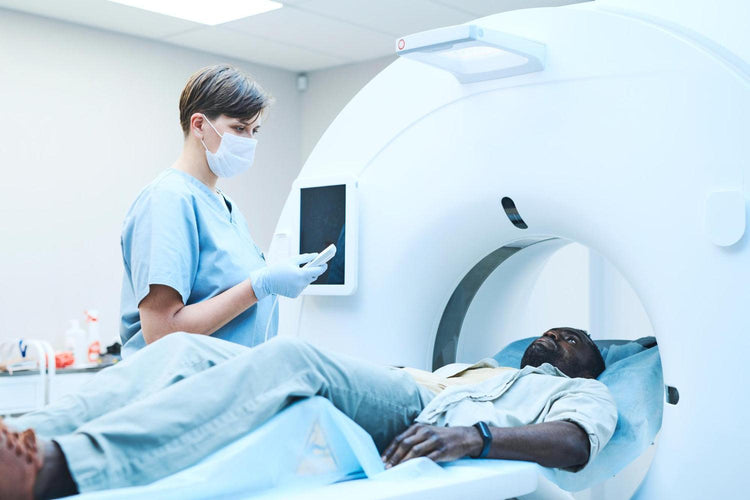What Cancers Cause Elevated Liver Enzymes?

Related products
Being one of the largest organs in the human body, the liver serves multiple functions in our body. One of the functions include removing harmful substances from our body and metabolizing nutrients to provide energy to the cells. Inorder to perform these functions the liver secretes enzymes such as alanine transferase (ALT), alkaline phosphatase (ALP), aspartate aminotransferase (AST), and gamma-glutamyl transpeptidase (GGT).
These proteins act as catalysts for chemical reactions that occur within the cells of the liver. A rise in their levels could be a sign of abnormalities including inflammation or organ damage.
Some of the causes for Increase in liver enzymes include alcohol use, diseases including hepatitis A and B virus infection, and drug reactions. One addition to this list is cancer.
There are many malignancies that lead to increase in the liver enzyme levels even when the liver is not directly impacted. And there is still much to learn about the relationship between elevated liver enzymes and cancer.
Performing liver function tests can give us a clear glimpse into possible internal problems. They not only indicate potential infections, cirrhosis, etc., but also serve as indirect evidence of the presence of cancers.
Maintaining a healthy lifestyle serves as a preventive measure to maintain lifetime, even in the face of sporadic genetic tendencies. Since latent stages have a higher chance of survival than advanced ones, it is crucial to keep an eye out for any unexpected changes and to contact a doctor as soon as possible if one is discovered.
What Are Liver Enzymes?

Liver enzymes are a class of proteins produced by the liver. They are essential to chemical reactions and operate best at certain optimum temperatures.
Although there are an incredible 500 different types of these vital molecules, just four are often evaluated in routine health checks. These include alanine aminotransferase (ALT), aspartate transaminase (AST), alkaline phosphatase (ALP), and gamma-glutamyl transferase (GGT).
- ALT: Mostly found in liver cells, an increase in this marker strongly implies that the liver may be harmed or unwell.
- AST: Mostly present in the heart and liver tissues, an elevated AST level may indicate problems beyond hepatic illnesses, like myocardial infarction.
- ALP: An essential part of the bile duct system, it facilitates fat absorption by breaking down complicated molecules into simpler ones that may be further processed.
- GGT: This enzyme is crucial to the metabolism of glutathione, the body's primary antioxidant, because of its reactive nature.
Elevations in any of these variables have a big effect, triggering tests that validate suspicions concerning a number of illnesses, such as cirrhosis, hepatitis C, autoimmune diseases, and so on.
Liver Blood Test is available at welzo which helps you test for Bilirubin, Alanine transferase (ALT), Gamma-glutamyltransferase (GGT), Albumin, Alkaline phosphatase (ALP), Aspartate Aminotransferase (AST), Total Protein, and Globulin simply and at the comfort of your home,
Cancers That Cause Elevated Liver Enzymes
Liver Cancer

Liver cancer, in particular, hepatocellular carcinoma (HCC) has a direct effect on how liver functions. It disrupts normal biological functions, perhaps leading to negative outcomes such as elevated enzyme release. Two enzymes that are frequently elevated in HCC are aspartate aminotransferase (AST) and alanine transferase (ALT).
Symptoms of liver cancer may not be noticed until the condition has progressed sufficiently. However, when symptoms do manifest, they could consist of:
- Unusual weight loss,
- decreased appetite,
- abdominal pain
- Yellowing of the skin or eyes, or jaundice
These warning signs necessitate immediate medical attention because early detection improves the chance of successful therapy.
A sudden increase in liver enzyme levels points to a potential issue that might involve damage, inflammation, or other elements. Additional testing is required to obtain an accurate diagnosis. To identify liver cancer, a physician uses the following methods:
- Imaging tests like CT and MRI scans
- Alpha fetoprotein (AFP)-primarily measuring blood tests
- If a biopsy is required, a small sample of tissue may be taken in order to determine whether malignancy is present.
Routine examinations ensure timely response, reducing related death rates despite their harsh nature.
Colorectal Cancer
Colorectal cancer, a type of cancer that starts in the colon or rectum, is one of the main causes of cancer-related deaths globally. In many cases, it begins as benign large intestine polyps that develop into cancer.
Liver health and colon cancer may be at danger due to their close proximity. Metastatic dissemination can occur when colorectal cells invade healthy liver tissues and seriously disrupt their function. This disturbance causes enzymes such as ALT and AST to increase, indicating liver distress.
Among the symptoms include
- persistent abdominal pain,
- rectal bleeding or blood in the stool, and
- irregular bowel motions (constipation or diarrhoea).
- Weakness/fatigue
- Any noticeable decrease in weight
There are three primary steps in the diagnostic process.
- Physical Examination & History: Considering family and personal medical histories.
- Stool Occult Blood Test (FOBT): Confirms whether the provided stool sample contains hidden blood.
- Colonoscopy/Sigmoidoscopy: Using visual techniques, the full or partial inner lining is examined to detect any potential abnormalities; in some cases, a biopsy is carried out to confirm the diagnosis based on subsequent test findings.
Breast Cancer
One of the main illnesses that still has a big impact on women's lives in the UK is breast cancer. According to CancerResearch UK, it is the most prevalent cancer, with an estimated 56,822 new cases diagnosed each year.
It's intriguing to observe that this cancer exhibits definite links to enzyme release and liver function. If breast cancer grows or metastasizes to the liver and causes substantial damage, elevated ALT/AST levels show that the liver is damaged. Because of this, hepatic issues may also indicate an unidentified main tumour underneath.
Patients often experience symptoms such as:
- Abnormal lumps/bulges in breasts
- Irritation/dimpling skin texture flawlessly mimicking an orange peel
- Swelling/redness/pain experienced all/partly involving breasts
- Inverted nipples shown retracting inward instead usual protruding appearance
If a person exhibits these warning indicators, they need to consult a doctor immediately.Soon after suspicions are confirmed, a potential biopsy is made possible by the mammogram-ultrasound combination used for the initial diagnosis.
Doctors usually use array imaging procedures, such as MRI/PET scans, to accurately develop an appropriate treatment road map. These tests identify the presence, location, and extent of spread.Secondary liver disease is discovered by additional blood testing that looks at higher enzymes, allowing for accurate staging and the creation of the most effective treatment strategy.
Lung Cancer
Lung cancer is a prevalent malignancy in the United Kingdom. Based on data from Cancer Research UK, it is the third most common type of cancer, with approximately 49,229 new cases recorded each year.
When lung cancer spreads to other organs, including the liver, it disrupts the normal patterns of enzyme release that are controlled by the presence of tumour cells, which significantly impairs liver function.
The primary symptoms are Key Symptoms:
- Persistent cough that lasts for three weeks or more
- Chest pain intensifies with deep breathing or coughing
- Blood-streaked sputum (phlegm)
- Unexplained weight loss
- Fatigue
The diagnosis is usually made by a series of tests, starting with a physical examination and moving forward according to the key findings. The testing may include imaging studies like CT and MRI scans. PET scans are useful for confirming suspicions and visualising areas of activity. By using biopsies to determine the type and stage of the disease, pathologists can develop the most effective treatment approach.
Stomach and Esophageal cancers
Stomach and esophageal cancer are common gastrointestinal malignancies. The cause of stomach or gastric cancer is the lining of your stomach, and symptoms do not appear until much later. Stomach or Gastric Cancer originates from lining inside your stomach presenting symptoms only during later stages with initial signs/symptoms including:
- Persistent indigestion
- Trapped wind along constant burping
- Feeling exceptionally full after eating (even small amounts)
- Unexplained weight loss
As the tumour narrows the oesophagus, esophageal cancer, which begins in the food pipe and initially causes similar complaints, has distinct symptoms, such as increased difficulty swallowing food or liquids.
To diagnose these conditions, doctors use a range of techniques, such as endoscopy (using a tiny tube to examine inside the body), biopsies (removing cells or tissues), and imaging tests like computerised tomography (CT) scans.
Tumours of the stomach and oesophagus can disrupt normal liver function because they can spread. One of the most prevalent signs of intrahepatic cholestasis is elevated ALP/GGT values, which signify bile flow obstruction. Regular monitoring of liver enzymes becomes crucial for the early detection and effective treatment of potential disturbances in normal functioning or the progression of illness.
Pancreatic Cancer
Pancreatic cancer is among the most deadly cancers. It accounts for 3% of all new cancer cases in the UK, placing it in 10th place (2017-2019).
Increased enzyme production frequently indicates the direct effect of pancreatic cancer on liver function. ALT/AST levels tend to rise sharply as these cancerous cells proliferate, infiltrate liver tissue, or obstruct bile passage into the intestines.
Symptoms that are essential for early diagnosis but, regrettably, frequently manifest when the disease has progressed to an advanced stage:
- Pain in the abdomen
- Jaundice, or yellowing of the skin or eyes;
- inexplicable weight loss
- A pale colour of the bowel motions
Diagnosis primarily involves an array of non-invasive as well invasive methods depending upon clinical situation:
- Physical examination & history : Checking general signs like lump detection at pancreas.
- Blood tests: To look for tumour markers CA19–9 commonly linked with this condition.
- Imaging tools such as MRI scans and CT Scans for visual representation aiding surgical plan if required later.
Skin Cancer
Skin cancer is one of the most common cancers in the United Kingdom. An astounding 147,000 new cases are reported in the area each year.
People might be shocked to hear that skin malignancies have an indirect effect on liver function. In severe situations, such metastasis, when cells migrate to other organs, the liver's efficacy is diminished, as evidenced by elevated enzyme levels.
Symptoms of Skin Cancer:
- Appearance or changes in moles (size, shape, colour)
- Small lesions with irregular borders
- Painful sores remaining unhealed
A physical examination is a preliminary assessment of regions that are likely to be problematic. A biopsy is a more conclusive test that involves removing small tissue samples and looking at them under a microscope to check for abnormal cells.
While there isn't a direct link between high liver enzymes and skin cancer, there are strong associations, especially for aggressive types that result in secondary deposits in hepatic tissues.
Non Cancerous causes of elevated liver enzymes
Liver enzymes play an important role in the body's metabolic processes. Usually, a rise in these levels suggests a potential disease or liver injury. However, not all causes of elevated liver enzyme levels are cancerous. Numerous non-cancerous disorders are to blame for this increase.
- Alcohol Use: Long-term, excessive alcohol consumption is known to damage the liver, often resulting in inflammation and eventually cirrhosis.
- Fatty Liver Disease: Elevated ALT/AST levels and disruption of normal function are caused by the accumulation of fat in hepatic cells.
- Hepatitis: Hepatocyte inflammation brought on by viruses like hepatitis B and C is known to raise enzyme output.
- Overuse of Medication: Some drugs, such statins and paracetamol, can cause immediate harm and increase blood pressure if taken excessively or over an extended period of time.
- Autoimmune Diseases: Conditions like autoimmune hepatitis cause the immune system to damage its own tissues, which raises enzyme levels dramatically.
Takeaway
Liver enzymes such as ALT, AST, ALP, and GGT are necessary for many body processes. An increase in their levels indicates health issues related to the liver, which can have both non-cancerous and malignant origins. Non-cancerous causes include autoimmune illnesses, hepatitis, and excessive alcohol use. The importance of frequent screenings cannot be overstated because, surprisingly, increased enzyme levels are linked to malignancies, suggesting diagnostic utility. Liver enzymes are elevated in a number of malignancies, including lung, breast, colorectal, and liver cancer. Accurate diagnosis is essential to lessening the disease's severity and effectively promoting preventive health care practices.
Frequently Asked Questions
Do high liver enzymes indicate cancer?
Elevated liver enzymes don't always necessarily indicate cancer. As there are many causes that elevate liver enzymes. But elevated liver enzymes could be a sign of an advanced cancer that
What is the most likely cause of elevated liver enzymes?
Fatty liver disease, hepatitis, and excessive alcohol use are the most frequent causes of increased liver enzymes.
What is the number one symptom of liver cancer?
One of the main signs of hepatic carcinoma is frequent abdominal pain, which typically appears in the latter stages of the disease, making early detection difficult.
What are the blood test signs of liver cancer?
Extremely high ALT/AST counts, abnormal bilirubin levels, and markedly decreased albumin amounts are among the blood tests that can detect signs of hepatocellular carcinoma. The Alpha-fetoprotein (AFP) test is also helpful in identifying this type of cancer, which is why medical professionals use it as part of their overall diagnostic process.










 Rated Excellent by 26,523+ Reviews
Rated Excellent by 26,523+ Reviews